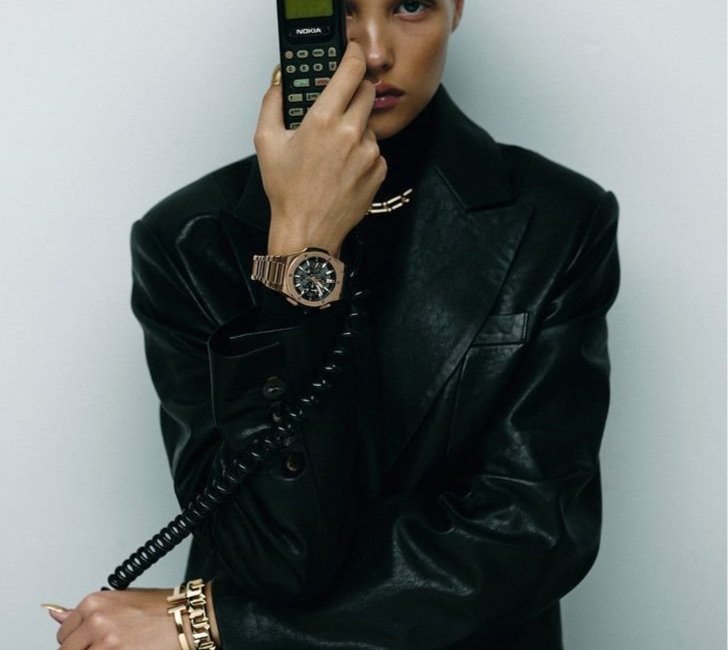
THE FASHION TECH EDIT
CUTTING-EDGE TECH IN FASHION
The Role of Virtual Fashion: How AR and VR are Shaping 2025’s Retail Landscape
Virtual fashion is no longer a futuristic concept; it’s becoming a mainstream reality. Augmented Reality (AR) and Virtual Reality (VR) technologies are expected to dominate the fashion landscape in 2025, transforming both online and in-store shopping experiences.
With AR, consumers can virtually try on clothes and accessories from the comfort of their homes, reducing return rates and enhancing customer satisfaction. Virtual try-on experiences are becoming increasingly accurate and lifelike, allowing customers to see how a garment will look on them before making a purchase. In-store, VR is allowing shoppers to step into immersive showrooms and engage with brands in entirely new ways, creating unforgettable experiences that blend the digital with the physical.
Moreover, the rise of virtual fashion, where consumers purchase digital clothing for their avatars in virtual worlds, is gaining momentum. Fashion brands are tapping into this space by creating virtual garments that can be worn in gaming environments, social media profiles, and the metaverse. In 2025, this intersection of fashion and virtual reality will open up a new revenue stream for retailers while allowing them to engage with a younger, digitally native audience.
As these technologies evolve, they will continue to push the boundaries of how consumers interact with fashion, providing new opportunities for brands to innovate and connect with their customers in a hyper-personalized, immersive way. Fashion retailers who embrace AR and VR in 2025 will be poised to lead the next wave of retail evolution.
Phoebe Gates and Sophia Kianni: Empowering the Next Generation of Creators and Designers
COMPANY: PHIA.COM
Phia.com is not just about connecting consumers with fashion-it’s also about empowering the next generation of designers. Through its suite of tools and services, the platform provides resources for emerging talent to bring their visions to life.
Design Tools: Phia.com offers powerful design software that allows fashion creators to experiment with patterns, fabrics, and concepts without the need for expensive prototypes or physical samples. This makes fashion design more accessible and sustainable by minimizing waste and reducing costs.
Collaboration Opportunities: The platform facilitates collaboration between established brands and emerging designers, fostering an environment where creative minds can connect, share ideas, and develop collections that resonate with today’s tech-savvy and eco-conscious consumers.
The Future of Fashion: How AI and Machine Learning Are Transforming the Industry in 2025
As we step into 2025, the intersection of fashion and technology continues to accelerate, with Artificial Intelligence (AI) and Machine Learning (ML) driving some of the most impactful changes.
As we step into 2025, the intersection of fashion and technology continues to accelerate, with Artificial Intelligence (AI) and Machine Learning (ML) driving some of the most impactful changes. AI is no longer just a buzzword but a powerful tool enabling fashion companies to streamline operations, personalize customer experiences, and predict trends with unprecedented accuracy.
In 2025, fashion brands will harness AI and ML to:
Predict Trends Faster: Through data-driven insights, AI can now predict fashion trends in real-time, allowing brands to stay ahead of the curve and create collections that meet consumer demand before it peaks.
Enhance Personalization: AI-powered recommendation engines will create hyper-personalized shopping experiences, with brands offering individualized clothing options based on customer preferences, behaviors, and past purchases.
Optimize Inventory Management: ML will improve supply chain efficiency, enabling brands to predict stock needs, reduce overproduction, and minimize waste. This will lead to more sustainable practices and improved profitability.
The integration of AI and ML into fashion is not just about automation; it's about enhancing creativity and building stronger connections between brands and their consumers. As these technologies evolve, fashion companies will need to be agile and embrace innovation to stay competitive in an increasingly digital world.
Transforming Fashion Retail for a Digital-First Future
The fashion industry is evolving rapidly, and retailers must adapt to meet the changing expectations of consumers
IThe fashion industry is evolving rapidly, and retailers must adapt to meet the changing expectations of consumers, streamline production, and optimize supply networks. At The Rozay Group, we specialize in helping fashion brands rethink their strategies, blending creativity with operational excellence to drive meaningful transformation.
Post-pandemic consumers are redefining priorities—seeking value, exploring new brands, and embracing digital shopping experiences. We help you stay ahead of these shifts, identifying innovative ways to cut costs while strategically investing in the digital tools and processes that power growth and loyalty.
Our approach is holistic and tailored. By diving deep into your core operations and supply chain, we identify high-impact areas for change. Whether enhancing brand positioning, optimizing product strategies, refining pricing models, or reimagining store concepts, we guide you from vision to execution. With The Rozay Group as your partner, you’ll deliver experiences that resonate with today’s consumers while building a resilient and agile business for the future.






